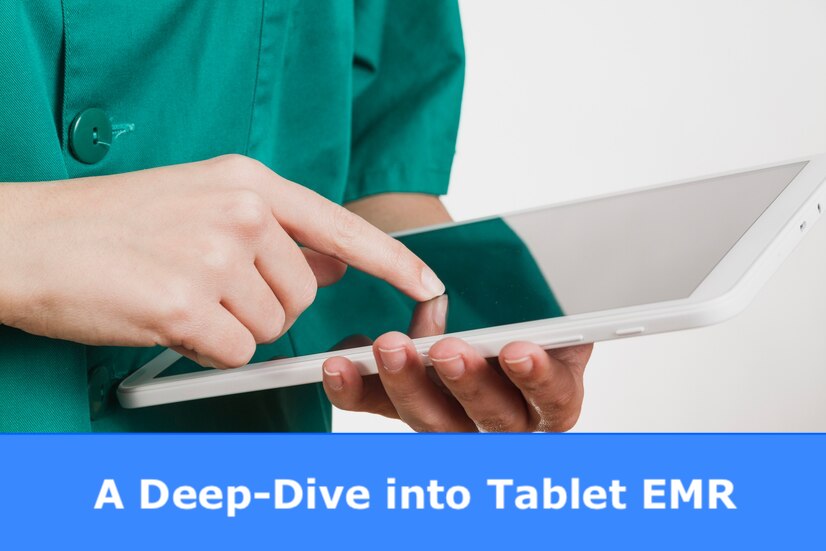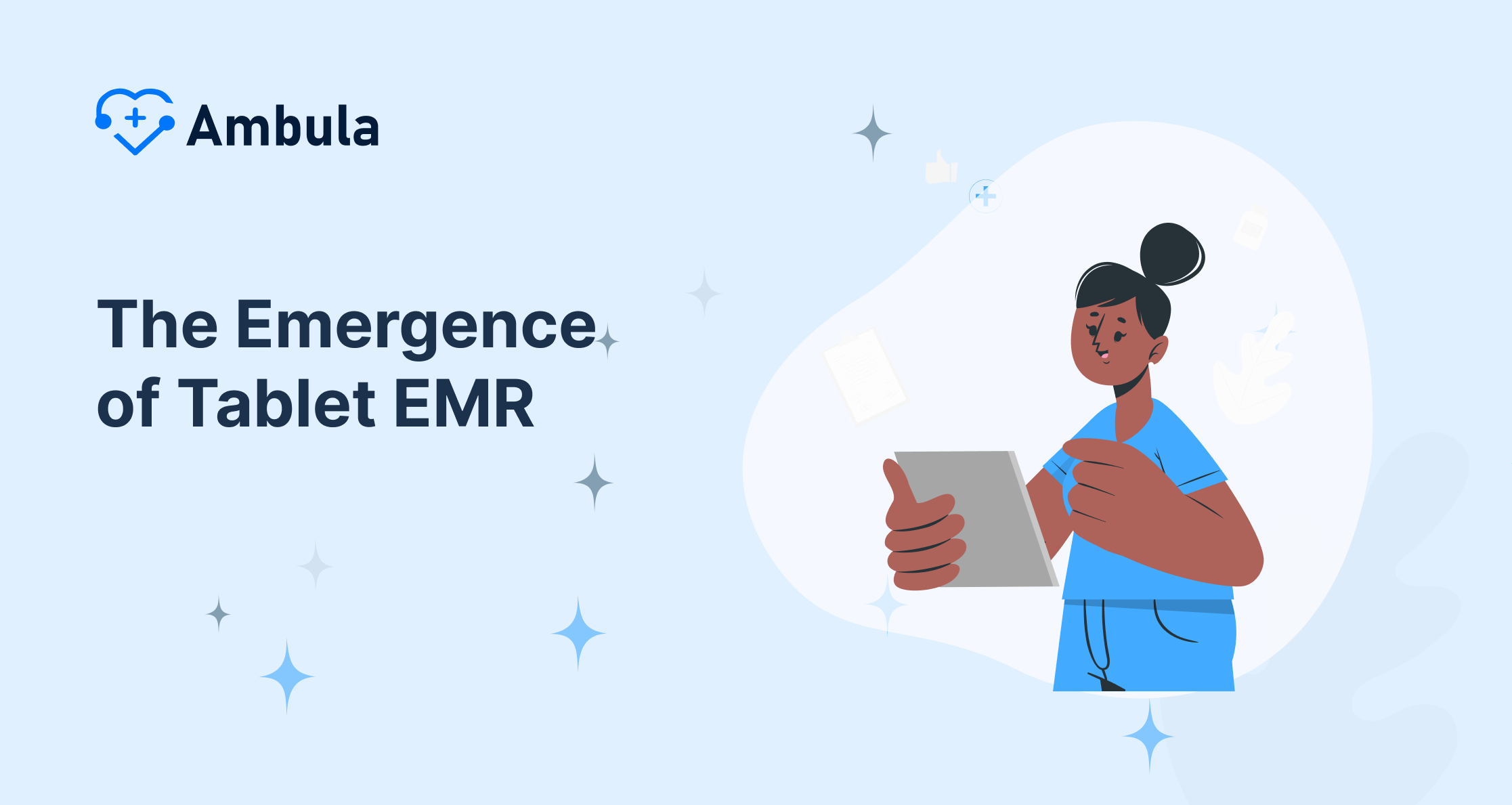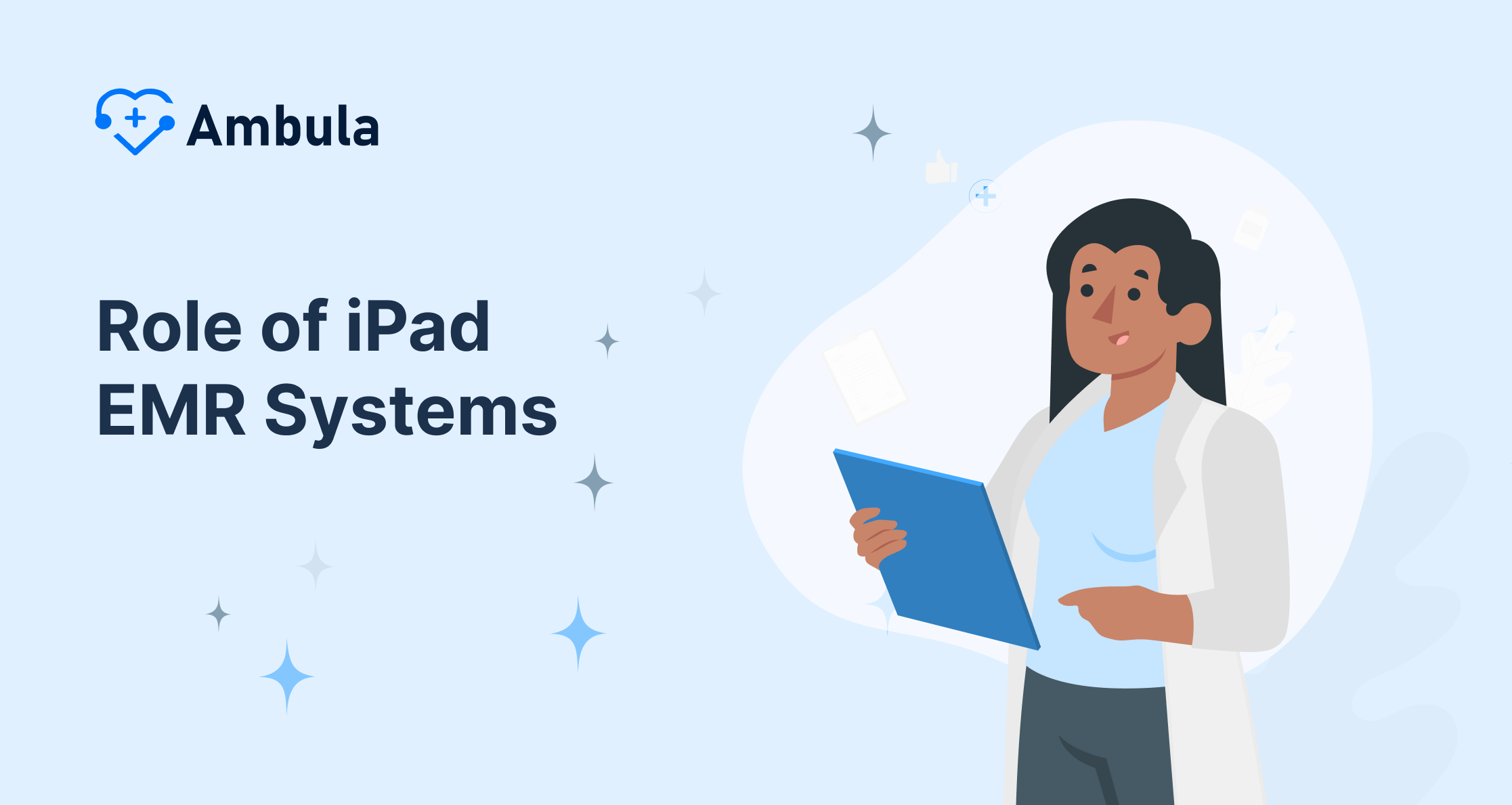
New ideas and tech have a big impact on healthcare, especially in turning medical records digital. Tablet EMRs (Electronic Medical Records) stand out as a game-changer in this field. These are just digital versions of the old paper charts doctors used. They make sure patient info is right, easy to save, and quick to find when needed. Cool tech like digital pens and smart software, including iPad EHR systems and pain medicine ipad emr, give Tablet EMRs their power. This tech is causing a revolution in how healthcare works, making things smoother and helping patients get better care.
The Emergence of Tablet EMR
You know how it feels when you’re going through piles of paper trying to find one medical record? It’s like looking for a needle in a haystack. That’s where Tablet EMR comes in. Think about having all your medical charts in digital form right at your fingertips, including pain management electronic medical records. It’s like carrying a super-organized file cabinet that you can access anytime. This is what makes a tablet EMR so great, and it’s one of the best emr for pain management. It’s pretty cool how this technology has caused a revolution in healthcare, isn’t it? You don’t have to deal with messy handwriting or lost papers anymore. It also makes everything run smoother, which is why it’s the best pain management emr. So, it’s no wonder that tablet EMR has changed the game, pushing healthcare into the digital world. The main point is that less paperwork gives you more time to focus on what’s really important: taking care of patients. You’ve got to appreciate how technology can make life easier!
Powering Tablet EMR
Ever wonder about the hidden magic in your favorite flick? A similar wizardry runs the Tablet EMR. Let’s take a look behind the scenes. We’re talking about Wacom’s patented EMR tech used in top pain management emr systems. It’s the big boss, like a movie director, calling the shots. Here’s how it works: EMR tech teams up with nifty tools like digital pens and EMR styluses. These pens are like actors following the director’s lead. They play their part in catching and noting every move like a spot-on line delivery. Next time you use a Tablet EMR, picture all the backstage action making it tick with pinpoint accuracy. Pretty cool, right? It’s amazing how tech has mixed art and science to make our lives easier. It’s like holding a tech masterpiece in your hand.
Role of iPad EMR Systems
Picture yourself as a doctor on a busy day. You rush from one patient’s room to another, update charts, record data, and check patient histories. It’s a flurry of activity. Now, meet the hero of this tale – iPad EMR Systems, the top pain management ehr. This clever tech puts all you need in your hand. It organizes patient histories, simplifies your notes, and gathers all key medical data in one spot, making it perfect for managing a pain management practice. You won’t need to shuffle through piles of paper files or run back to the office for missing info. If note-taking were an Olympic event, iPad EMR systems would grab the gold. It brings amazing accuracy to digital notes making sure you catch every detail, thanks to features like pain management emr templates. So when you pull out your iPad and zip through your rounds, you’re not just filling out charts; you’re leading a well-organized data concert, all thanks to your trusty iPad EMR system – the best pain management ehr. It’s got your back, getting you ready to tackle another day in the fast-moving world of healthcare. That’s a real game-changer!
Looking into Sketch Pads and E-Pencils
Imagine you’re a doctor today juggling tasks in your busy schedule. Think about how often you need to remember, draw, or write down something important while on the move. What if you had a digital pen and drawing tablet ready to use? That could boost your drawing skills. Just like your iPad EMR system digital pens and drawing tablets are key tools in medicine for pain management surgery ehr. But instead of storing patient data, these tools quickly capture your vital notes. Think of these digital pens and drawing tablets as top helpers in your medical kit. They assist you, make your quick sketches better, and help you come up with new ideas. These tools are precise, work fast, and are made to keep up with your hectic day, which makes them great for pain practice management. Next time you need to draw a quick diagram or take notes during rounds, remember these well-made digital tools are a big win for doctors like you. They’re out there turning a normal day into a big success. That’s what we mean by working smarter, not harder!
Software and Tools for Tablet EMR
Regarding Tablet Electronic Medical Records (EMRs), some handy software and tools make a big difference in productivity. One such software is called Clip Studio Paint Pro. It’s a powerful program often used by artists but has also found its way into Tablet EMRs.
Clip Studio Paint Pro offers a range of features that can benefit medical professionals working with EMRs on tablets. It allows for easy note-taking and annotation on the tablet screen, which is excellent for documenting patient information or highlighting essential details. The software also offers a variety of drawing and painting tools, so if you need to sketch something or illustrate a concept, it’s got you covered.
In addition to the software, tools like Wacom tablets enhance the overall experience of using Tablet EMRs. Wacom tablets are special devices that connect to your computer or tablet and allow you to draw and write with a stylus. They provide a more precise and natural way of interacting with the tablet than using your finger.
With a Wacom tablet, you can easily navigate the EMR software, write or draw directly on the screen, and annotate precisely. It’s a significant improvement over using a regular touchscreen, especially regarding detailed tasks or fine motor control.
By combining software like Clip Studio Paint Pro with tools like Wacom tablets, medical professionals using Tablet EMRs can boost their productivity. These tools make it easier to input data, create visual representations, and navigate through electronic records more efficiently.
Making the Right Choice
Hey there! Have you ever found yourself overwhelmed by the vast array of options when choosing a Tablet EMR (Electronic Medical Records) system? Well, fear not! I’m here to guide you through making the right choice.
In this handy guide, we’ll dive into the world of Tablet EMR systems, exploring how to select the perfect one for your needs. We’ll cover everything from identifying compatible devices to assessing the various options available in the market.
First things first, let’s talk about Tablet EMR systems. These systems allow you to manage electronic medical records on a tablet device, providing a portable and efficient way to access and update patient information. It’s crucial to choose the right system that suits your specific requirements.
Now, let’s tackle selecting the ideal Tablet EMR system. We’ll break it down into crucial steps to make things easier.
- You are identifying compatible devices. Not all Tablet EMR systems work on every tablet out there. We’ll help you understand the compatibility requirements and ensure your chosen system works seamlessly with your device.
- We are assessing the available options. The market is flooded with Tablet EMR systems, each claiming to be the best. We’ll walk you through various systems’ features, functionalities, and pricing models, allowing you to compare and evaluate them effectively.
- You are making an informed decision. With the knowledge of compatible devices and an understanding of the available options, you’ll be ready to make a well-informed decision. We’ll provide tips and considerations to help you weigh the pros and cons and choose the Tablet EMR system that best fits your needs.
Looking Ahead
Tablet EMRs are expected to play a pivotal role in transforming healthcare as we progress. Imagine a world where medical professionals can access patient records, update information, and communicate seamlessly, all from the convenience of a tablet device.
One of the critical impacts of Tablet EMRs on healthcare services is improved efficiency. By eliminating the need for paper records and manual data entry, medical practitioners can save time and focus more on providing quality care. With instant access to patient data, doctors can make informed decisions faster, leading to better diagnoses and treatment plans.
Tablet EMRs also have the potential to enhance collaboration and communication among healthcare teams. With shared access to electronic records, multiple healthcare providers can coordinate care more effectively, improving patient outcomes. This collaborative approach promotes a holistic and comprehensive approach to healthcare.
For patients, Tablet EMRs bring numerous benefits as well. Imagine having your medical history, test results, and treatment plans accessible. Tablet EMRs empower patients to take a more active role in their healthcare journey, enabling them to stay informed and engaged in their treatment. It also reduces the chances of errors and duplicate tests since healthcare providers can quickly access and share accurate information.
Conclusion
The digital shake-up in healthcare isn’t some far-off dream—it’s unfolding as we speak, with Tablet EMRs leading the charge. These game-changing tools are transforming patient care boosting the accuracy, availability, and speed of medical records. The real magic of today’s EMR systems? They’re flexible as can be. Whether you’re on a desktop, phone, or tablet, cloud-based answers give you easy access to key patient details.
If you’re a healthcare pro feeling iffy about embracing new tech, don’t sweat it—the switch is way smoother than you’d think. With easy-to-use layouts and top-notch help, going digital with your records is a smart move to improve patient results and streamline your work. Healthcare’s future is all about cloud connections, mobile-friendly tech, and a whole lot more productivity.
Want to see how state-of-the-art EMR technology can help your practice? Check out Ambula EMR for a no-cost chat and find out how you can bring your practice up to date. Looking forward, we can be sure of one thing: healthcare and tech will keep growing together pointing to even more groundbreaking answers for better patient care and smoother running of medical offices.






